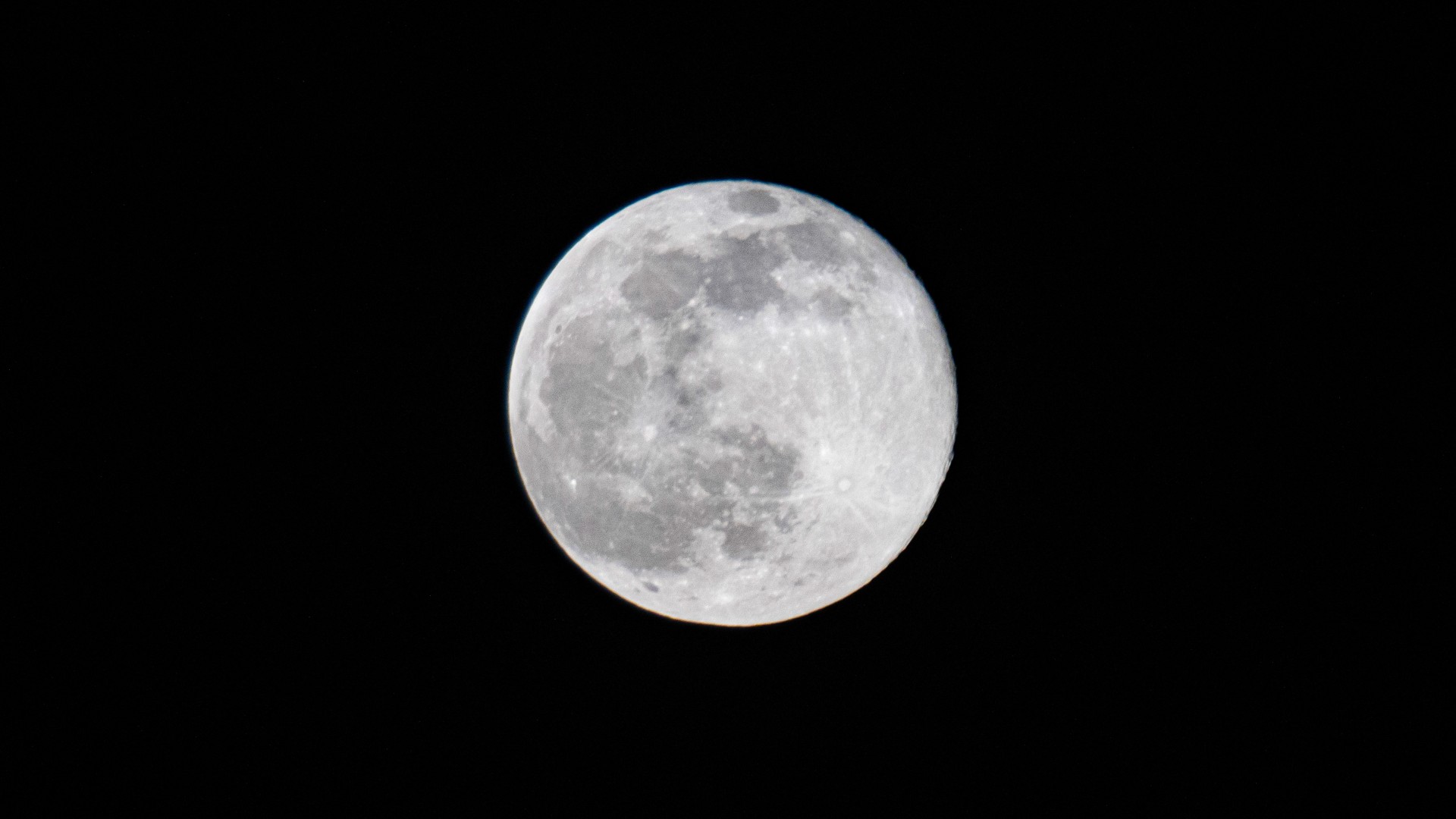Watch February's Full Snow Moon on Sunday (Feb. 5) with this free telescope webcast
The Full Snow Moon will be joined by a few guests this year.

February's full moon rises this weekend, and you can watch it shine brightly in the sky without having to brave winter's frigid evening temperatures.
This Sunday (Feb. 5), the Full Snow Moon will rise at 1:28 p.m. (1828 GMT). By the time the skies darken, the moon will be joined by a few special guests: Mars and Jupiter will be positioned well for early-evening viewing, and early birds who get out to gaze upon the full moon just after dark can catch a glimpse of Venus before it sets around 7:24 p.m. EST (0024 GMT on Feb. 6) as seen from New York City.
For those skywatchers who are unable to get out to see the moon, the Virtual Telescope Project is hosting a free online livestream of February's Full Snow Moon. The livestream begins Sunday (Feb. 5) at 11 a.m. EST (1600 GMT) and can be viewed courtesy of the project's website or YouTube channel.
Related: Full moon calendar 2023: When to see the next full moon

Want to get a close-up look at the moon? We recommend the Celestron Astro Fi 102 as the top pick in our best beginner's telescope guide. Don't forget a moon filter!
February's Full Snow Moon gets its name from the fact that, for many parts of the Northern Hemisphere, February is the month with the heaviest snowfall. However, other cultures and locations have their own names for the full moon for each month. The indigenous Tlingit people of the Pacific Northwest, for example, call February's full moon "S'eek Dís," or "Black Bear Moon," while the Ojibwe (or Anishinaabe) peoples likewise refer to it as the Bear Moon, or Mikwa Giizis. The Cree, meanwhile, call it the Great Moon.
In the Southern Hemisphere, where February is a summer month, the Māori of New Zealand refer to the month as Hui-tanguru, or "the foot of Ruhi now rests upon the Earth," in reference to the star Ruhi found in the Scorpio constellation.
If you're interested in taking photographs of the full Snow Moon, check out our helpful how to photograph the moon guide for the best lunar photography tips and tricks. We also have guides to the best cameras for astrophotography and best lenses for astrophotography if you need to gear up for this or other celestial events.
Breaking space news, the latest updates on rocket launches, skywatching events and more!
Editor's Note: If you catch a great photo of the Full Snow Moon and would like to share it with Space.com's readers, send your photo(s), comments, and your name and location to spacephotos@space.com.
Follow Brett on Twitter at @bretttingley. Follow us @Spacedotcom, or on Facebook and Instagram.

Brett is curious about emerging aerospace technologies, alternative launch concepts, military space developments and uncrewed aircraft systems. Brett's work has appeared on Scientific American, The War Zone, Popular Science, the History Channel, Science Discovery and more. Brett has degrees from Clemson University and the University of North Carolina at Charlotte. In his free time, Brett enjoys skywatching throughout the dark skies of the Appalachian mountains.
